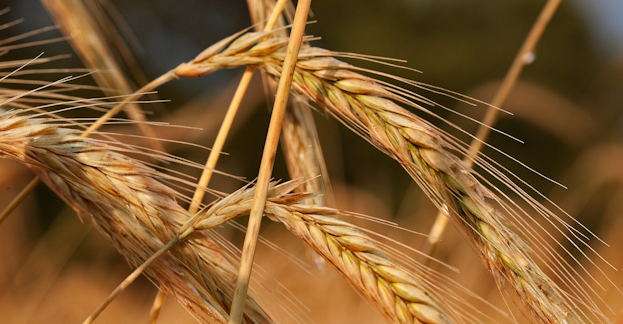What You Need to Know About Rye

“If you plant it, we’ll drink it.” This could be a summary of the history of rye grain farming in America, especially during our Colonial Era. As for rye bread, we place it in more modern times, even if we (increasingly) don’t care much for it today. It’s not the rye’s fault. Our distaste is rooted squarely in the flavorless industrial mono-crop ryes now grown for baking. Where’s the flavor in modern rye flour? Bakers regularly ask us this question. Of all bread grains, traditional heritage rye hates industrialization more than any other.
Heritage rye has historically marched to a different drinker. Early tavern and public house roggenbier, for instance, was session-style beer: cheap, fizzy, fun, and forgettable, except for the promise of flavor in distillations to come. Apart from brewing, heirloom rye straw was used for fodder, bedding, thatch, winter cover, field management, common bread, and distillation. The tallest of all field cereal crops, rye was uncommonly easy to grow and majestic in stature and flavor (over seven feet tall!), beckoning us toward future (drinking) pleasure.
Rye defined drinking and bread culture during our Colonial Era, and just after our Revolution as well. The fact that the colony of Connecticut couldn’t sustain wheat production meant that thirded bread (or Boston brown bread), made with a combination of wheat, rye, and corn meals, was not a cultural survivor in the Provision State, though it was popular in other New England colonies. “Rye and injun,” a bread made with rye and cornmeal, minus the wheat, survives in Connecticut to this day.
Rye defined social classes after our Revolution to such a degree that it was one of George Washington’s elite cash crops, one that was grown for spirit. Mount Vernon rye whiskey, distilled and aged on the grounds, fetched the highest American spirit prices of the post-Revolution era. Old George apparently remains a defining figure of elitism within the American sipping crowd despite his “common man” proclivities: Mount Vernon recently began re-growing colonial rye and has released some pretty pricey estate hooch.
So, why do we tend to skip over rye bread and rye farming foodways in the South? The first reason is that rye bread culture is extinct in the South—we copy off the smart Yankee bread girl for rye traditions and style in our modern baking culture. And the South has only remnant histories of rye bread culture anyway, overshadowed as they were by the high-quality alembic spirit exported from Charleston during our Colonial Era. The distillation ryes were Southern high farming art. Those are gone—and none remains in our national seed banks, either.
There were two important classes of rye: Roman rye on one hand, and French and German rye on the other. Roman rye was so vigorous it grew on almost any ground. (And it continues to do so to this day, such that Roman rye occupies more acreage than any other heirloom grain in modern America. So prolific is rye, in fact, that you find it on the highway shoulders in Vermont, in Texas scrub, and in field and forest plots everywhere between.) By 1680, Italian rice farmers had brought the ancestors of modern ryes to Carolina rice fields for winter grazing and brewing—and bread. These hardy rye varieties descended from the first Roman ryes planted and selected over centuries by Jesuit monks who moved away from Rome and into caves in upper Abruzzo beginning in the 11th century. Jesuits selected their ryes for extraordinary vigor in a harsh environment. Today, the ryes of Abruzzo are unmatched for their stoic persistence in marginal ground. Most heirloom ryes of Abruzzo follow characteristics handed down from early flatbread culture. We could call them “soft” or “biscuit” ryes, but with proper technique, they make spectacular artisan breads. They also make terrific “small” beers.
The vaunted traditions of French and German alembic ryes and rye bread–making began nearly one-half century after Roman rye arrived in Carolina. All of that culture is lost in the Carolinas today. Anson Mills grows and mills a few heirloom German and French ryes and processes them as custom ingredients for pastry chefs. We also grow some very old Carolina French rye for artisan bread makers and distillers. We could write a book on these 19th century Carolina traditions alone.
But of all the grains we grow at Anson Mills, we prefer our humble Abruzzese rye for simple pleasures. We love the comforting visual of Abruzzese rye’s whole-grain coarse crimson germ and bran flecks in simple flatbreads, and we love the defining citric flavor “ping” in the very low-alcohol session beers brewed with Abruzzese rye (which are really food, in our humble opinion, not beer). Above all, we love the unimaginable depth of nutty flavors, and the lean and laser-focused mineral and robust field-grain flavors of just-harvested Abruzzese rye. Baked, roasted, simmered, or brewed in anything, the compendium of these flavors reminds us of clean spring mountain water over stone. Like no other grain, Abruzzese rye has a unique and romantic quality that expresses something from a thousand years ago. Finally, we know that Abruzzese rye earns its highest respect in simple slow-baked, hearth-style sourdough biscuits and thirded breads.
This is the food of our first Carolina farming. We hope you come to love this grain as well.